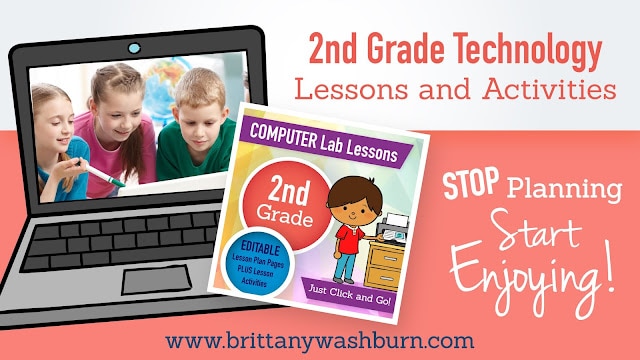Top Teaching Tips for Tech Teachers
I interviewed two tech ed teachers, asking them to each give their top 3 tips for fellow tech ed teachers.
First up, Kathy Weir, who has been teaching for 20 years. She was a former classroom teacher for grades 1,3,4,5, and a former K-8 specialist for PE and Technology. She also served as the technology integration specialist and tech coach for a K-8 school district. She is currently an Elementary Technology instructor but due to COVID, is also doing a lot of PD and tech coaching. Here are her top 3 tips for fellow edtech teachers:
“1. Limit the number of online resources you have students accessing during distance learning. Make sure these websites and software are easy to navigate with little or no guidance. When possible, explore the ability of tools already familiar to students as well as native tools within your school’s choice of platforms.
2. Whenever possible during live sessions, limit the number of resources students have to access during that live session. Fewer tabs open equals better Wi-Fi connect for students. Better connect for the student could lead to a higher level of engagement and lower level of stress and frustration.
3. If offering PD, reference the SAMR model. Teachers may be feeling overwhelmed in learning a lot of new tech tools. The SAMR model can celebrate the transition teachers are making with remote learning and highlight how teachers are elevating the learning experience for their students with the integration of technology.”
Next we have Beth Hamlin, a K-1 Remote specials facilitator and Middle School Technology Teacher. She has been working in education for nearly 2 decades and loves presenting and sharing creative ways to utilize G Suite tools, Chromebooks, Computer Science, and other technologies such as 3D printers and Raspberry Pi.
“1. Don’t try to do it all. There are an incredible amount of resources, tools, and ideas. It can get really overwhelming. Try having a goal or two for the year or part of the school year in what you want to improve or explore.
2. Don’t try to know it all. We often think we have to know the tool before we share it with students. We need to make sure the site is safe and meets our requirements for compliance and privacy. I find students love the ability to play and explore with you. Celebrate their findings. Be inquisitive with them and allow them to be part of the evaluation process. It gives students more buy in.
3. Simplicity/ Consistency- Especially this year, when our learners are not in consistent environments, it’s important we not introduce too many different places or logins. If you have multiple places students need to log in- try to make the login the same. Single sign ons are helpful. Families are at various stages of stress, trauma, and ability. The more consistent and clear you make things, the more manageable they can be. If you give 3 sites with different logins to students- it can be muddling. Making videos to explain how to log in (no matter the age level) are very helpful. Even better if you can involve your students and community in creating these help tutorials to help others. Post these tutorials in one place and also link to them each time students need to use them. Less clicks makes for a better user experience and saves you more time in the long run.”
I also asked technology education teachers from a variety of different backgrounds to give their top tips to fellow tech ed teachers. Here is what they said!
-
“Make technology fun! Something the kids look forward to!”
-
“Don’t reinvent the wheel-don’t make it too complicated-it’s ok if it’s not quiet, the best learning isn’t quiet.”
-
“Start a “Done Early” list of extension activities for students that finish early.”
-
“Make a class website! Make sure to pick a platform that allows for a password protected page for sharing files with students.”
-
“Go slow”
-
“Find a few favorite tech tools that can be used for different things and use those. Teach your kids to use them in multiple ways. Don’t feel obligated to use everything. It’s too much for you and the kids.”
-
“Remember that you are a teacher first.”
-
“Use humor and make connections. Tech is a journey not a destination.”
-
“Keep those non tech kids at the forefront of your lesson planning. Start simple to avoid frustration but always have extensions for those ready to fly.”
-
“Remember Developmentally Appropriate, even though students have tech at home, it’s not always used the way you think.”
-
“Reteach reteach reteach”
-
“Let the students explore new tools and see what they can discover on their own. Give general guidelines for projects so students can surprise you with their creativity!”
-
“Create a website that has common educational links on it making it easier for students and yourself.”
-
“Don’t get hung up on everything being perfect, allow flexibility. When technology doesn’t work give it grace, I constantly say “I love you air server!” While I say it, I’m doing what it takes to make it work but I’m teaching my students that patience is better than showing anxiety when things don’t work.”
-
“Always have a plan B!”









